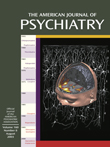Family History of Suicide Among Suicide Victims
Abstract
OBJECTIVE: The aim was to compare the rates of suicide in family members of suicide victims and comparison subjects who died of other causes. METHOD: The Swedish cause of death register identified all suicides in subjects born between 1949 and 1969 (N=8,396). The comparison group comprised persons of the same age who died of other causes (N=7,568). First-degree relatives of the suicide victims (N=33,173) and comparison subjects (N=28,945) were identified. RESULTS: Among families of the suicide victims there were 287 suicides, representing 9.4% of all deaths in family members. Among comparison families there were 120 suicides, 4.6% of all deaths. The difference was significant. Previous psychiatric care and suicide in a family member predicted suicide in the logistic regression model. CONCLUSIONS: The rate of suicide was twice as high in families of suicide victims as in comparison families. A family history of suicide predicted suicide independent of severe mental disorder.



